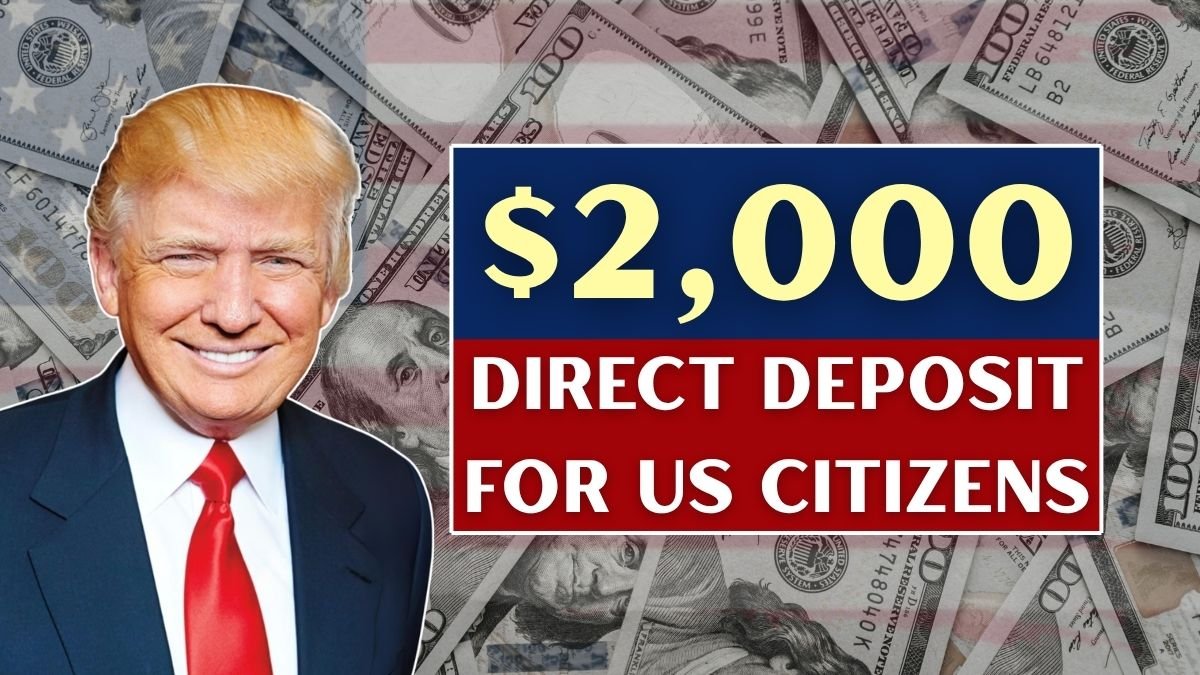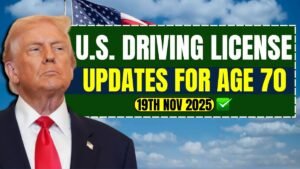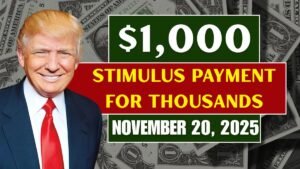In the US, rising inflation, rising rent prices, electricity and water bills, medical expenses, and the high cost of everyday items have strained the budgets of ordinary citizens. In such a scenario, there’s been a lot of discussion on social media about a $2,000 direct deposit. Many people are hoping that this payment will be deposited directly into their bank accounts and provide some relief during these difficult times. But is this plan actually being implemented? Has the IRS approved it? And if it is, who will be eligible?
This article provides you with complete information in simple language—no complicated terms, just clear and reliable facts. Let’s understand the details.
How did the discussion about the $2,000 direct deposit originate?
In the past few weeks, numerous posts about a potential $2,000 aid have gone viral on Facebook, TikTok, and Twitter. Some videos claim that every American will receive $2,000 under a plan called the “2025 Economic Help Plan.” These claims reminded people of the $1,200, $600, and $1,400 financial aid checks received during the pandemic.
Due to inflation and an unstable job market, many believe the government may provide relief again. However, the truth is that the IRS has not yet confirmed any new $2,000 relief program. Congress has also not voted on such a plan. At this point, this is just social media speculation.
Who could qualify for a $2,000 direct deposit?

If this plan is approved, its rules may be similar to previous relief plans. Its purpose would be to provide assistance to those most affected by rapid inflation.
1. Income Limits—For Low and Middle Incomes
Potential income limits could be as follows:
| Filing Status | Maximum Annual Income (Full $2,000) |
|---|---|
| Single | Up to $75,000 |
| Married Filing Jointly | Up to $150,000 |
| Head of Household | Up to $112,500 |
Those earning more than these amounts may receive a reduced amount or no amount at all, as was the case with previous plans.
2. Must be a U.S. Citizen or Legal Resident
You will need:
- Valid Social Security Number (SSN)
- Proof of legal residence in the U.S.
3. Tax Return Filing Required
- The IRS collects your income, address, and bank information from your tax returns. Therefore, filing your 2023 and 2024 taxes on time will be essential.
4. Easy Process for Non-Filers
- If this program is implemented, a “Non-Filer Tool” similar to the one in place during the pandemic could be made available for low-income citizens, seniors, and Social Security recipients.
When can I receive a $2,000 direct deposit? Expectations and Possible Dates
Since this plan is not official, there is no confirmed date. But two possible timelines are circulating on social media:
Possible Date 1: August 2025
- Direct Deposit: August 15, 2025
- Paper Checks: August 22, 2025
- Final Wave: September 10, 2025
Possible Date 2: November 2025
- Between November 8 and November 22, 2025
Note: These are just estimates—the IRS has not confirmed them. Actual information is only released on IRS.gov.
IRS Statement—What’s the Truth?
According to IRS officials:
- No new relief program has been approved yet.
- Congress has not passed any new Economic Impact Payment.
- The $2,000 payment is just a rumor.
So, check official sources before trusting any viral video or blog.
If a $2,000 payment arrives, how will you receive the money?
Like previous relief programs, payments can be sent in three ways:
1. Direct Deposit—The Fastest Method
- The money will be deposited directly into your bank account. Most people receive the payment within 2–3 days.
2. Paper Checks – By mail
- If you haven’t provided bank information, the check will be sent to your address.
3. Prepaid Debit Card (EIP Card)
- This method can be used for people without a bank account.
Will this $2,000 be tax-free?
Past financial aid checks were not taxed. They were considered “Non-Taxable Relief Payments.” Therefore, it’s expected that the new payment will also be tax-free. However, the IRS will determine the final terms.
Why does the United States need a $2,000 direct deposit now?
Today, economic pressures are affecting every sector:
- Steep rent increases
- Food prices are at record levels.
- Gas and electricity bills are constantly rising.
- Medical expenses are beyond the reach of the average citizen.
- The job market is unstable.
In such a situation, a payment like $2,000 can help:
| Common Problem | How $2,000 Can Help |
|---|---|
| Rent and Bills | One month of relief |
| Grocery Expenses | Food supplies for several weeks |
| Medical Costs | Covers medicines and doctor fees |
| Credit Card Debt | Helps reduce interest burden |
| Job Crisis | Support while searching for new work |
This money isn’t for any luxury but can be very useful for meeting basic needs.
Scam Alert: Beware of $2,000 scams.
Where word of mouth grows, so does fraud. Watch for these signs:
- “Click here to claim your $2,000!” — Such a message is always fake.
- The IRS never asks for information via text, email, or WhatsApp.
- No “fee” is required to receive a payment.
- Don’t provide your SSN or bank information to suspicious websites.
Actual information can always be found on IRS.gov and Treasury.gov.
What can you do? Be prepared.
Although the payment hasn’t been confirmed, you can still take these steps:
- Update your bank and address records by visiting IRS.gov.
- Complete your tax filings on time.
- Sign up for IRS Alerts.
- Stay away from social media rumors.
- Share real information with your family.
Conclusion: Hope is alive, but wait for confirmation.
The buzz about $2,000 direct deposits has emerged as a ray of hope. In these difficult times of inflation, this amount could provide real relief to families, senior citizens, laborers, and the unemployed. But this is only possible if:
- Congress approves it.
- The IRS implements it.
Until an official announcement is made, exercise caution and seek information only from reliable sources. If approved, this plan could prove to be a major economic relief for millions of Americans.
FAQs
Q. What is the purpose of the $2,000 payment?
A. It is meant to help households manage rising living costs and essential expenses.
Q. Who is eligible for the $2,000 stimulus?
A. Eligibility is based on income limits, filing status and IRS records.
Q. Do I need to apply for the payment?
A. Most people won’t need to apply if their tax information is already updated with the IRS.
Q. How will the $2,000 be delivered?
A. Payments are usually sent through direct deposit, paper checks or debit cards.
Q. When will the $2,000 stimulus be released?
A. The release date depends on the final IRS update and government approval.


